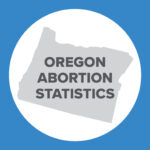Obamacare’s Second Year: Are Plans Really Segregating Abortion Funds?
Now, four and a half years since the Affordable Care Act’s passage and nearing the end of its first year of implementation, concerns over elective abortion coverage in health insurance exchange plans continue to be dismissed by the current administration. In addition to the evident lack of transparency over which plans cover this “benefit,” the Charlotte Lozier Institute (CLI) has now also found that the ACA provision that is supposed to separate funds used for elective abortions from other taxpayer payments in federally subsidized health insurance exchange plans is largely inoperative.
According to Section 1303 of the ACA, issuers of insurance plans that cover elective abortion on the health insurance exchanges are required to “collect from each enrollee in the plan (without regard to the enrollee’s age, sex, or family status) a separate payment for [elective abortion services],” which must be deposited “into a separate account that consists solely of such payments and that is used exclusively to pay for [elective abortions].” (emphasis added)
Two major questions emerge: Exactly how do plan issuers “collect” and keep separate this abortion surcharge? And, second, do they inform prospective and current plan members that a portion of their monthly payment goes directly to an abortion-on-demand fund?
This August, CLI asked this exactly of about 20 insurance companies that have elective abortion plans on the exchanges and that provide an e-mail address for inquiries. E-mail was chosen as the main means of inquiry, as CLI has over its year-long search for answers experienced many phone conversations to be just as unproductive, though more time-consuming as many frontline representatives were also left stranded with inaccurate (or no) abortion coverage information to share. CLI also mailed letters to the same 20 companies plus another 20 who provide elective abortion coverage on the exchange, requesting copies of their accounting plans as required to be filed with the state health insurance commissioner (See: 45 C.F.R. § 156.280[e][5][ii]). As of this article’s publication, three weeks since the mailing, no replies have yet been received.
The Lozier Institute found overall that most representatives do not know about a separate abortion premium charge that involves all members, and they generally responded instead with information on coinsurance, copay, deductible, and/or a separate rider to be determined on a case-by-case basis according to the specific plan and the woman’s situation. The few below that did address the segregation of funds question offered a troubling glimpse into how the provision is simply not being followed, and therefore hasn’t been observed for the entire year:
- A Member Services agent of Connecticare in Connecticut informed CLI on August 14: “Normally the separate account only has to be set up if your employer has a religious exemption on their policy.”
- A Client Services representative of HealthyCT, also in Connecticut, on August 20 replied that the company “puts $1.00 of each member’s premium into an abortion segregation fund.” In a surprisingly straightforward communication, the agent continued, “Per the law, HealthyCT does not allocate any federal money into our abortion segregation fund. All elective abortions are paid for out of this fund.” Regarding how HealthyCT informs members, however, the agent provided the following quotation here from the 2015 Certificate of Coverage that is currently pending approval:
”The Plan will also cover elective abortions. The Affordable Care Act specifically prohibits use of federal funds to pay for elective abortion services. As per federal law, $1.00 of your premium per month will be moved to a segregated abortion fund in order for HealthyCT to pay for any elective abortion procedures. If you do not pay $1.00 or more per month in premium, you may be billed separately for this amount.” (emphasis added)
Importantly, the current 2014 Certificate of Coverage does not contain this billing language.
- A Member Services representative from Health Republic Insurance of New Jersey (HRINJ) on August 14 said she didn’t know what CLI meant about the separate abortion payment, but instead replied, “This does not apply to New Jersey. All plans in New Jersey offer that benefit included in the monthly premium.” In a previous e-mail responding to CLI’s inquiry about whether HRINJ covered voluntary abortion, the same agent likewise explained that “termination of a pregnancy is a mandated coverage by the state of New Jersey’s Department of Banking and Insurance. All plans in New Jersey must offer this service.” According to CLI’s research, indeed all plans currently cover elective abortion in the state exchange. The New Jersey Administrative Code that includes all regulations up through June 2014 did not appear to include such a mandate, however.
- A Member Services agent from Maine Community Health Options (MCHO) over several e-mails in early September wrote that the separate payment “is a Federal Requirement and is taken in to consideration in premiums and included [sic] it is nothing you would pay extra for if that makes sense.” When CLI asked for clarification that the company itself later separates the payment from the member’s total premium, the agent reiterated: “It’s all handled per Federal and state guidelines and would not be the member’s responsibility to deal with any sort of separation, etc.” Though CLI asked whether MCHO informs its plan members that a part of their premium is placed in a separate elective abortion fund, MCHO did not directly address this in any response.
- A licensed agent from AmeriHealth of New Jersey (AHNJ) via live chat replied after a wait of 20 minutes: “How the funds are dispersed (sic?) is handled by the pre-certification department” that she explained must receive prior approval from the member’s doctor. After clarifying CLI’s interest in the separate payment required by law to be collected from all members, this agent transferred us to a second licensed agent to respond, though she also continued along the route of prior approval, stating, “Once a decision is made, you will be notified. I am unable to answer your question as far as how AHNJ collects separate payments.”
When asked which department one might contact, CLI learned that “there isn’t a department that you can contact. This situation has to go through the proper channels. Once we decide if the procedure is going to be covered or not I can assure you that you are going to get all the necessary information you need.” As a side note, the chat screening page requires selection of a category of question into which an inquiry would fall, including “healthcare law,” which CLI selected.
- A representative from the Premium Billing Department of Western Health Advantage (WHA) in California replied, “To notify our enrollees of the elective abortion benefit we include the following statement on our invoices. ‘Please include an additional separate payment of $1 per family member every month as required by federal regulations. For more information, please visit mywha.org/$1fee.’ This money is then deposited into a separate account.”
When CLI asked whether WHA provided plan members with the $1 fee website address or otherwise notified members prior to enrollment or the first month’s bill, the company explained in puzzling fashion: “We do not bill for the separate amount because we are not obligated to bill as a mandatory fee. Most of our members send an extra check for the fee, or include it in their payment. WHA identifies those extra fees in a payment or sent individually, and it goes into an account that is separately mailed to the Feds.” One wonders if “required by federal regulations” is not effectively the same as “mandatory,” and the idea of those funds being mailed to the federal government, rather than retained and managed by the insurance company, is obscure.
These highlighted responses illustrate a whole host of problems. Most importantly, it is clear from the above that taxpayers are subsidizing elective abortions and many likely without even knowing – serious threats both to the liberty of those who would object and to the integrity of this administration’s promise of an elevated level of transparency. As it stands, no fewer than 25 states have recognized this threat and passed their own laws banning elective abortion plans from their state exchanges. Of the nine states that both lack such a law and do not yet participate in the Multi-State Plan Program (MSPP) that guarantees at least one “pro-life” non-elective abortion covering plan in each state, CLI found that four of these do not have any pro-life options for its residents. These are: Connecticut, Hawaii, New Jersey, and Rhode Island.
Further, it is not clear that this administration has made a serious effort to enforce its own segregation of funds accounting provision. It is clear that plan issuers are not billing it separately in actuality, and yet they have submitted to the state health insurance commissioner the required paperwork explaining in detail the accounting process in which they plan to keep funds segregated. Whether the accounting plans were approved without scrutiny and follow-up or whether companies are not following their own accounting standards for this benefit is unclear.
Another real problem highlighted above is the federal mandate to keep the abortion surcharge effectively hidden from consumers. The Rules Relating to Notice clause of Section 1303 of the ACA states that “any advertising used by the issuer with respect to the plan, any information provided by the Exchange, and any other information specified by the Secretary shall provide information only with respect to the total amount of the combined payments for [elective abortion services] and other services covered by the plan” (emphasis added). The WHA invoice as seen above, though not an advertising document, exemplifies the secretive spirit of the clause by not itemizing the abortion fee and veiling it in talk of “federal regulations.” Even PolitiFact admitted of the abortion surcharge: “It turns out to be a hidden fee.”
Promise after promise (after promise) over the past 10 months from the Department of Health and Human Services for more transparency on insurance plans with elective abortion coverage has come to naught. More than four years later, Americans are also realizing that Nancy Pelosi’s infamous statement, “But we have to pass the bill so that you can find out what is in it,” was truly prophetic. The root of the problems, however, will not be solved simply with more transparency and better accounting as this does not sufficiently address the real conscience concerns of a majority of Americans who oppose taxpayer subsidies for abortion, the current state of affairs across dozens of states and hundreds of plans.
Genevieve Plaster is a Research Assistant at Charlotte Lozier Institute.

























